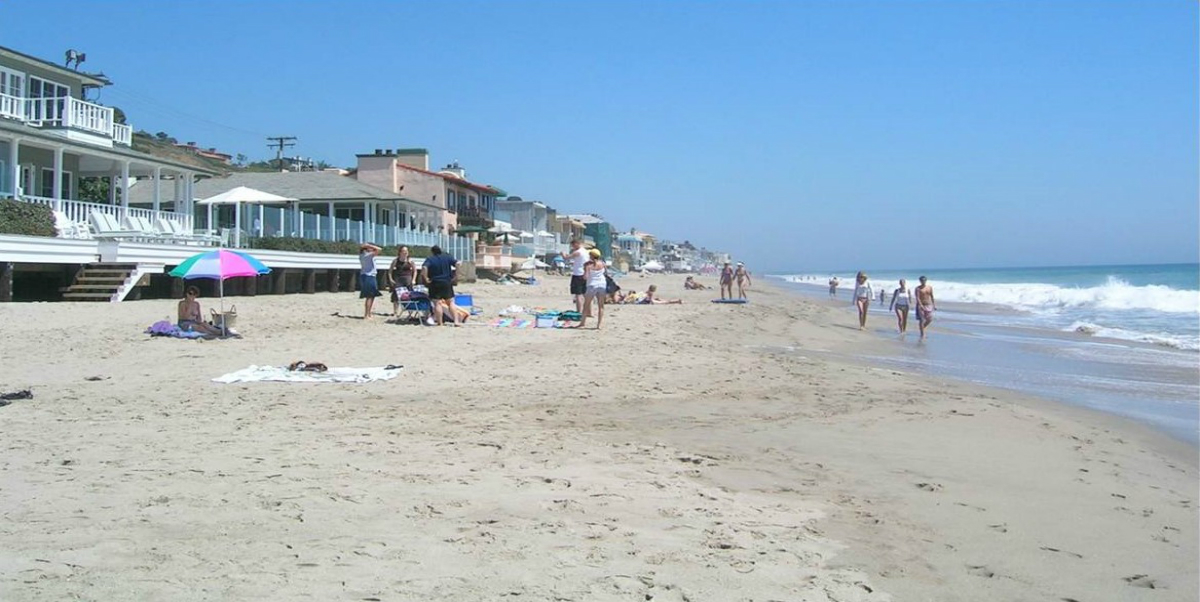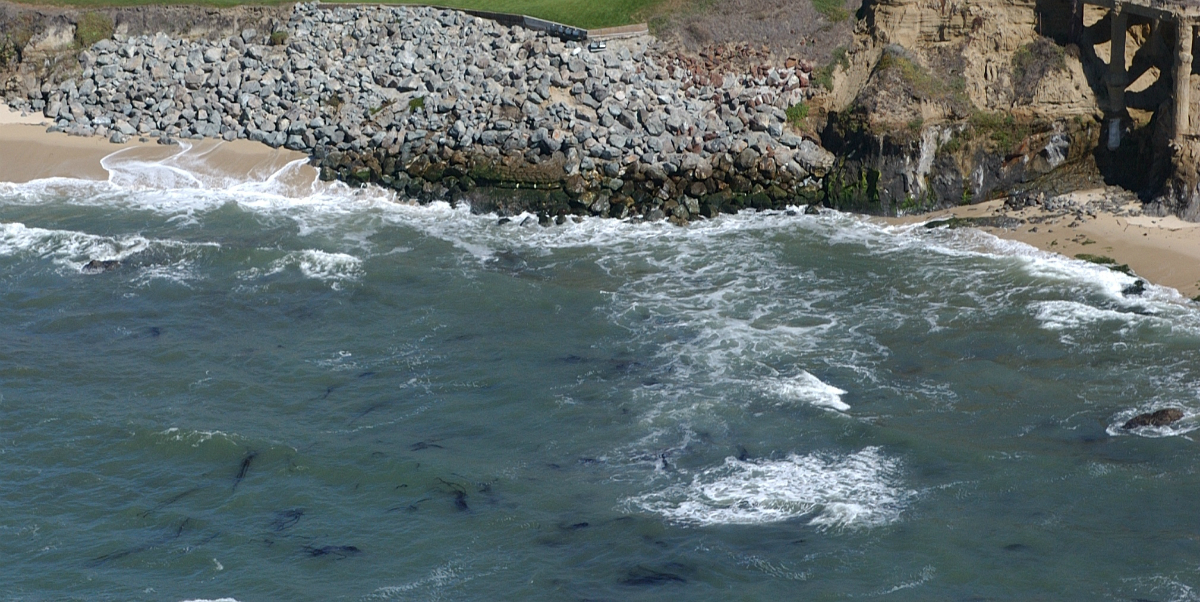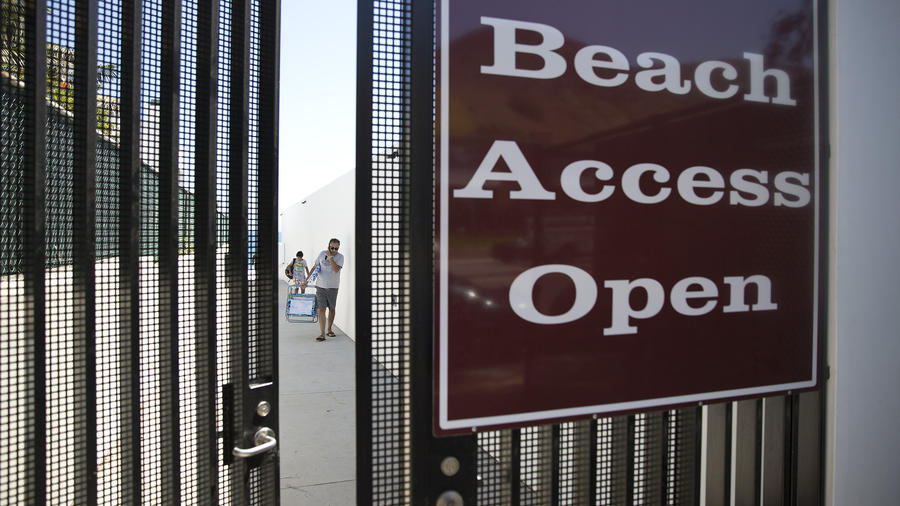
Protecting public access to the coast for all and recreational opportunities is a core mandate of the Coastal Act. The Commission's Enforcement Program works to protect public access to the coast when it is impaired by violations of the Coastal Act. Along with other remedies, the Commission has the ability to impose administrative penalties for violations of the public access provisions of the Coastal Act for up to $11,250 per day for each violation. These violations may include preventing or limiting public access through the placement of gates, fences, and no-parking signs, trail closures, or other such actions.

Protecting and restoring coastal habitats is vital to preserving California’s unique coastal ecosystems and wildlife. The Commission's Enforcement Program works to remedy violations of the Coastal Act by requiring the restoration of any affected habitat, including chaparral, coastal bluffs and dunes, wetlands, and other native coastal habitats. Frequently, the Commission also demands additional mitigation to offset the impacts of violations, resulting in increased habitat restoration or increased habitat placed in conservation and protected from development.

Regulating development in the Coastal Zone to protect coastal resources was a prime motivation behind the adoption of the Coastal Act. The Commission's Enforcement Program works to require the removal of items, materials, and structures placed without approval under the Coastal Act, or in violation of the conditions of a Coastal Development Permit, as well as the cessation of activities that violate the Coastal Act or a Coastal Development Permit.
The mission of the California Coastal Commission's Enforcement Program is to uphold the requirements of the California Coastal Act and that Act's mandate to protect coastal resources, including coastal habitats, coastal public access and recreation, and other coastal resources. The Enforcement Program works to ensure that all non-exempt development along the California coast, including in certain coastal mountains, undergoes the Act’s independent permit review process and secures the required Coastal Development Permit (CDP). The Commission's Enforcement Program also works to ensure compliance with all terms and conditions of CDPs previously issued by the Commission. In certain cases, the enforcement program also helps to enforce compliance with the Local Coastal Programs of local coastal governments and the Coastal Act.
The Commission has the authority to issue Administrative Orders to require, among other things, compliance with the Coastal Act and, in certain cases, remedy violations of the Coastal Act by requiring the removal of unpermitted development and the restoration of sites to native habitat, as well as require additional restoration through mitigation. The Commission also has the ability to seek judicial penalties, and in cases involving coastal public access, the Commission can impose penalties itself, administratively.
The Enforcement Program is led by the Chief of Enforcement, and divided into a Northern District Unit, a Southern District Unit, and Headquarters staff. District staff are based in offices in San Diego, Long Beach, Ventura, Santa Cruz, San Francisco and Arcata and investigate violations and attempt to resolve the violations at an early stage. Headquarters staff work on cases that could not be resolved at the district level and bring violations before the Commission to address those cases through the issuance of formal administrative Cease and Desist Orders or Restoration Orders. Headquarters staff also seek to resolve violations amicably through "Consent Orders," but may also bring proposed administrative orders to the Commission unilaterally and propose that the Commission impose administrative penalties. Headquarters staff also support the Commission in litigation concerning Coastal Act violations.
The California Coastal Act regulates development (as broadly defined within the Act – see below) within the Coastal Zone, which is an area along the California coast of variable width, in some cases extending up to five miles inland and including coastal mountains. A violation of the Coastal Act can occur in two main instances. First, when someone undertakes development within the Coastal Zone that requires a CDP from the Coastal Commission or a local government, without obtaining such a permit. Second, when someone takes an action that is prohibited by or inconsistent with the conditions of a CDP previously issued by the Commission or fails to complete actions as required by a CDP. Importantly, current property owners are responsible for resolving existing Coastal Act violations on their property, even if the development originally predated the ownership.
The term "development" is defined very broadly in Chapter Two of the Coastal Act. It covers many activities, including, but not limited to, the construction, demolition, or alteration of the size of homes or other structures; the grading of earth, extraction of materials, and removal of major vegetation; the disposal of liquid or solid waste; the subdivision of land or changing of lot lines; changes in the intensity of use of water; and actions that change access to the coast, such as the placement of fencing, gates, or no parking/trespassing signs.
Unless exempt, any such activity in the Coastal Zone is regulated by the Coastal Act, and for such development a CDP may be required from the Coastal Commission or a local government with a certified local coastal program. A CDP is separate from, and in addition to, other city or county, state, or federal permits that may be required, and it ensures that development along the coast occurs in a way that conserves, sustains, and makes prudent use of California's natural and recreational coastal resources.
Any development that is inconsistent with the terms or conditions of a previously issued CDP is a violation of the Coastal Act. The terms or conditions attached to a CDP are included because they are necessary to ensure that the proposed development is consistent with the Coastal Act. Such conditions might include a requirement to provide an easement that allows for public access to or along a beach or nature trail; restrictions on future development that can occur on the property; or other measures that protect coastal resources such as visual resources, water quality, and the land and marine environment of the area.

Whatever activities you may be considering in the Coastal Zone, you should find out whether a separate CDP is required in addition to any other local permits. You can find out if a CDP is needed and how to apply by contacting the local commission office nearest your project site. Your local city or county planning department can also often tell you how to find out if a CDP is needed from the Commission or a local government under an LCP program.
You can learn more about permitting requirements by downloading our pamphlet, When Do You Need a Coastal Development Permit. Learning about the CDP requirements early in the planning phase, and before beginning work, can save you time and money and help you to avoid committing a violation of the Coastal Act.
For more about the Coastal Act requirements of a CDP, you may also consult the California Coastal Act and Coastal Commission regulations on our website, and/or the applicable local government's Local Coastal Program.
The Coastal Act grants authority for the Commission to seek civil liability penalties for any violation of the Coastal Act. Any person who violates any provision of the Coastal Act may be subject to a penalty amount that shall not exceed $30,000 and shall not be less than $500. When a person "knowingly and intentionally" undertakes any development in violation of the Coastal Act a civil penalty of not less than $1,000 and up to $15,000 can be assessed for each violation and each day in which the violation persists.
As of July 1, 2014, the California Coastal Commission gained new authority to assess administrative penalties for violations that impact public access to the coast or in the coastal zone. The new authority results from the addition of Section 30821 to the Coastal Act, which authorizes the Commission to impose administrative civil penalties for violations of the public access provisions of the California Coastal Act. The Commission's Enforcement Program is responsible for identifying potential 30821 cases, attempting to resolve them through cooperation and agreement, and, if no resolution is quickly reached, seeking the imposition of administrative penalties by the Commission at a public hearing. Under the new authority, the Commission may issue administrative penalties of up to $11,250 per day, for a maximum of five years, for each violation. In some cases, Section 30821 allows violators to avoid the imposition of penalties if they correct the violation within 30 days of notice. That ability, however, only extends to violations that are not in violation of an existing CDP condition and when a violator can correct the violation without the need for a new CDP.
Actions that violate the public access provisions of the Coastal Act are many and various, but when not authorized by a CDP, these public access violations may include the placement of "no-access," "no-parking," "no-trespassing," or other similar signs; the closure of public access trails or beach access by the placement of gates, fences, or other such development; increasing access fees, prohibiting certain types of public access users, or using security guards to discourage public visitors; placing development in a way that blocks or limits public access; and numerous other actions that limit or impact public access in the Coastal Zone.
Read our February 2018 Coastal Act Section 30821 Implementation Progress Report
When a potential violation is reported to Commission staff or otherwise discovered by staff, District Enforcement Officers conduct initial investigations of enforcement complaints and contact responsible parties and relevant local governments or other agencies. District Enforcement Officers strive to work with the responsible party to resolve violations without formal administrative action, when possible.
Some violations, however, require formal administrative action. Statewide Enforcement Officers, based out of the Commission's Headquarters office in San Francisco, prepare these violations for Commission action and present proposed administrative orders to the Commission. One type of administrative order is the Cease and Desist Order, to halt ongoing violations, order removal of unpermitted development, and to require compliance with the Coastal Act.
Enforcement Staff can also present Restoration Orders to the Commission that order the restoration of damaged coastal resources. Restoration Orders also frequently include a mitigation component for additional restoration to make up for the temporal loss of habitat or public access.
Statewide Enforcement staff work diligently with the responsible party to settle the violation and present a Cease and Desist Order and/or Restoration Order as "Consent Orders." These Consent Orders represent an amicable agreement to resolve the violation and avoid future litigation. Consent Orders may also resolve a violator's civil liability or administrative penalties. When an amicable resolution cannot be reached, however, Statewide Enforcement staff can also present and pursue a Cease and Desist Order and/or Restoration Order unilaterally.
Enforcement staff may also request that the Executive Director of the Commission record a Notice of Violation (NOVA) on the title of property on which there have been violations of the Coastal Act; or request that the Executive Director issue a temporary 90-day Cease and Desist Order to stop, or prevent, unpermitted development while full orders can be prepared and presented to the Commission.

While the Commission's enforcement staff actively monitors development activities within the Coastal Zone to the extent possible, the Commission relies substantially upon the public's help in its efforts to stop Coastal Act violations and to protect public access and natural resources along California's coast. Members of the public have discovered and reported many violations of the Coastal Act that have negatively affected natural resources along the coast or limited the public's ability to access coastal beaches or other recreational sites.
If you see development occurring near the coast that may not have a permit, that impairs natural resources, or limits public access within the Coastal Zone, this may be a violation of the Coastal Act. If you think you have witnessed a violation and do not wish to approach the contractor or property owner, or they do not respond to your concerns, you can contact your local government or a local Commission office to make a confidential report.
See below for the contact information of your district enforcement office.
Thank you for your interest in enforcement of the Coastal Act. For the best response, please contact the person listed below for the geographic area you are addressing, since they have expertise in that area. And during this time, in light of the fact we are largely working remotely, please contact the staff member by email. Contact information is available here. It may take us longer to respond to emails sent to this email box. Thank you very much for your patience and understanding.
Josh Levine, Enforcement Officer
Ellie Oliver, Northern CA Supervisor
Jo Ginsberg, Enforcement Officer
Ellie Oliver, Northern CA Supervisor
Vacant, Enforcement Officer
Ellie Oliver, Northern CA Supervisor
Carlo Rivas, Enforcement Officer
Cameron Lee, Enforcement Officer
Andrew Willis, Southern CA Supervisor
Diana Garcia, Enforcement Officer
Spenser Sayre, Enforcement Officer
Andrew Willis, Southern CA Supervisor
Marsha Venegas, Enforcement Officer
Andrew Willis, Southern CA Supervisor
Chief of Enforcement: Lisa Haage
Deputy Chief of Enforcement: Aaron McLendon
Headquarters Enforcement Supervisor: Vacant
Enforcement Counsel: Heather Johnston, Robert Moddelmog, Shelby Wayment, Stephanie Cook
THE INFORMATION ON THIS WEBPAGE IS INTENDED ONLY FOR INFORMATIONAL PURPOSES AND DOES NOT CONSTITUTE LEGAL ADVICE. FOR MORE INFORMATION, PLEASE CONSULT THE COASTAL ACT (CALIFORNIA PUBLIC RESOURCES CODE, DIVISION 20) AND THE COMMISSION'S REGULATIONS (CALIFORNIA CODE OF REGULATIONS, TITLE 14, DIVISION 5.5)